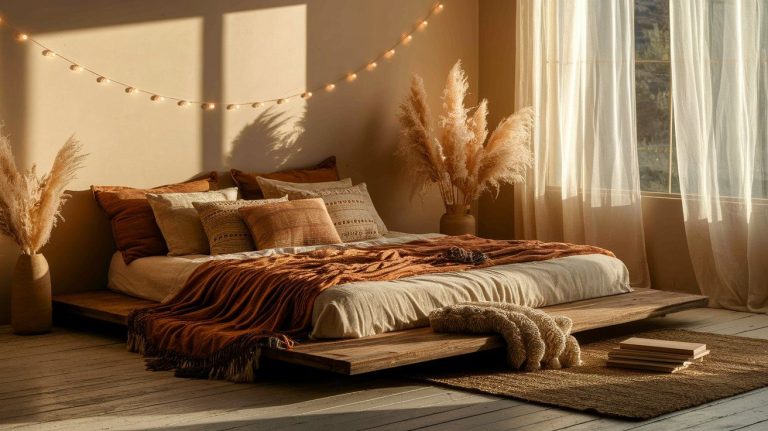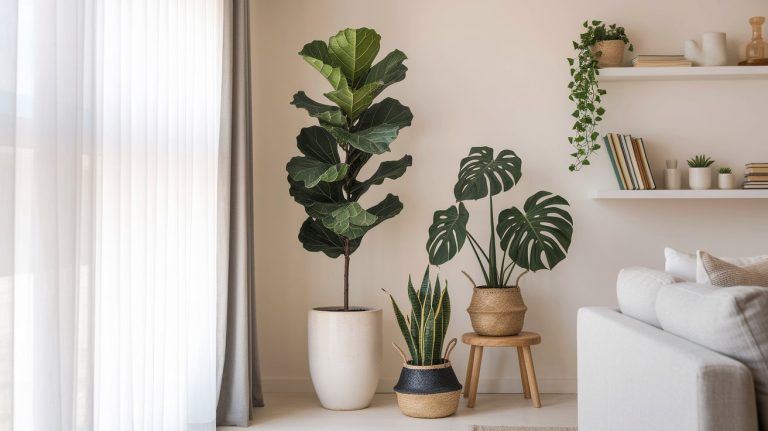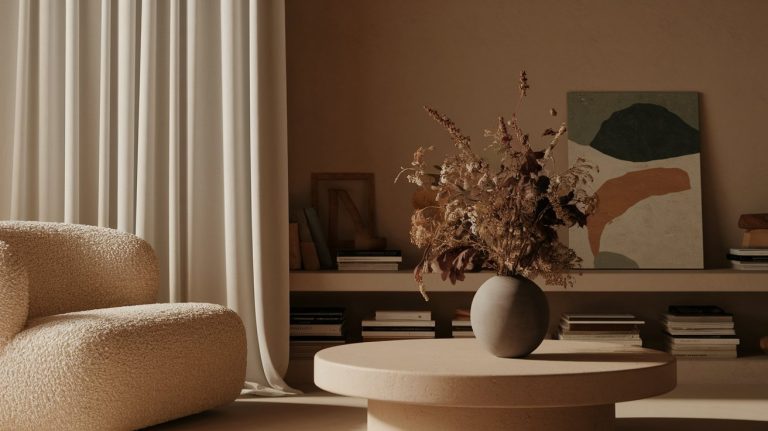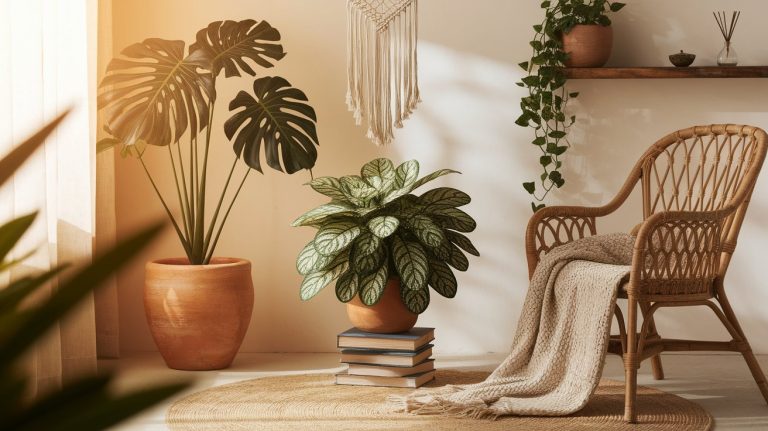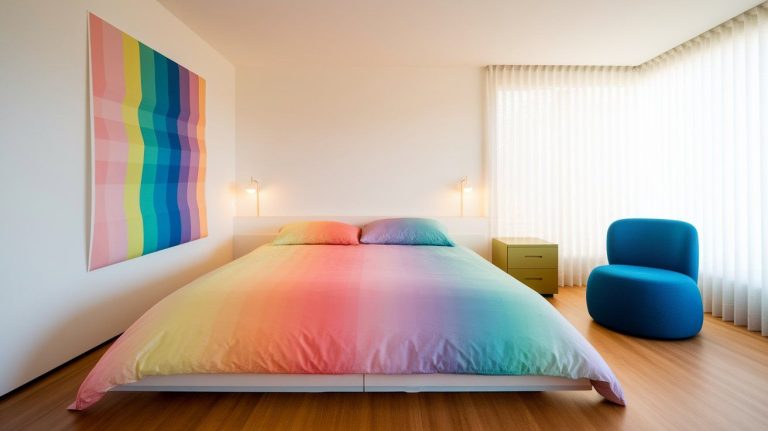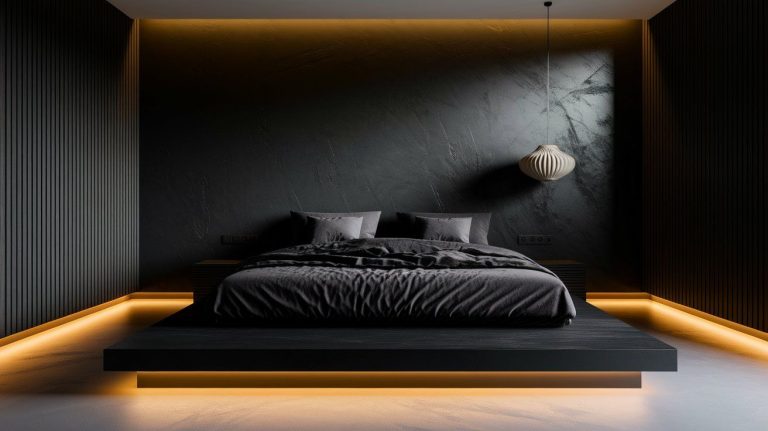The New Rules of Plant Aesthetics (Yes, There Are Rules Now)
Plants aren’t just decoration anymore. They’re part of your room’s vibe.
Where you put them, what you put them in, and how they sit in the light, it all matters.
These simple rules will help you style your plants like a pro and make your space feel calm, fresh, and full of life.
1. Plants Don’t Float, They Anchor
Every room needs a visual anchor. One strong, rooted plant creates a sense of balance before anything else does. It draws the eye, sets the tone, and makes the rest of your styling choices feel grounded.
Try this:
- Place a large Monstera or Fiddle Leaf Fig in a woven basket
- Position it in a corner, beside a sofa, or near a window
- Let the plant be the first thing that catches the light and your attention
You don’t need ten small plants. You need one that knows its role.
2. Vary Your Heights Like a Visual Playlist
A mix of tall, mid-sized, and trailing plants creates movement and depth. When everything’s the same height, your space feels flat. When the heights change, it feels alive.
Try this:
- Floor-standing plant + tabletop filler + hanging vine
- Use stands, shelves, and hangers to mix levels
- Think like a DJ: balance the beat, drop the highs, layer the lows
3. Containers Speak Louder Than You Think
The pot isn’t an afterthought, it’s part of the story. A raw clay pot feels earthy. A brass bowl feels vintage. The right container elevates the plant and the room.
Try this:
- Don’t default to white. Go textured, aged, or matte
- Let the container match the vibe, minimal, playful, or soulful
- Mix materials for contrast, not uniformity
4. Use Negative Space Intentionally
Every shelf doesn’t need a plant. Leaving room to breathe makes the greens you do use stand out more. Blank space is a styling tool.
Try this:
- Skip one shelf. Let the plant above it cascade into air
- Keep spacing between pots loose, not tight
- Let light fall into empty spots, it adds calm
Light Isn’t Just for Growing, It’s for Glowing
The way light touches your plants changes the whole mood. Use light like a design tool, let it shape how your space feels, not just how your plants grow.
Try this:
- Place a plant near a window where it catches soft, natural light
- Let sunlight hit the edges of leaves to create glowing outlines
- Time your placement to golden hour for the coziest effect
6. Use Corners as Canvas
Those awkward corners aren’t dead zones, they’re opportunities. One tall, leafy plant can bring life to the edges of a room and soften harsh lines.
Try this:
- Put a large plant in an empty corner to draw the eye inward
- Choose something sculptural like a rubber plant or snake plant
- Use a textured pot to add interest without needing extra decor
7. Group, Don’t Line Up
A row of plants feels stiff. Natural clusters feel calm and intentional. Think of plants like friends at a table, not waiting in line.
Try this:
- Group plants in sets of three with different heights and textures
- Use odd numbers and let the arrangement feel loose, not perfect
- Give each plant space to shine while still being part of a group
8. Texture Is the New Color
You don’t need bright blooms to make a visual statement. Fuzzy, glossy, matte, patterned, texture creates depth and mood.
Try this:
- Mix leaf types: velvety Calatheas with waxy Snake Plants
- Pair rough clay pots with soft trailing vines
- Let texture do the storytelling when color is subtle
9. Big Is Bold, Don’t Fear Scale
Tiny plants get lost. One oversized plant can take the whole room from basic to styled. It’s not more plants, it’s more presence.
Try this:
- Use a tall palm or Bird of Paradise to fill vertical space
- Let it be the focal point, even if it’s the only green in view
- Anchor it in a pot that feels equally substantial
10. Curate, Then Edit
Even plants deserve rotation. Not everything has to stay where it started. Moving things around can reset your space and your eyes.
Try this:
- Swap shelf plants every few weeks for a mini refresh
- Remove anything that feels like visual noise
- Leave a blank spot to invite in something new later
11. Embrace Imperfection
Real plants aren’t perfect, and that’s the point. A bendy stem or dry tip is part of the charm. It’s alive. Let it be.
Try this:
- Skip the urge to prune every stray leaf
- Celebrate odd growth patterns and asymmetry
- Let your space feel real, not staged
Conclusion: Let the Plants Set the Tone
Styling with plants is no longer guesswork, it’s a form of design. With the right mix of placement, light, texture, and personality, your greens don’t just sit there, they speak. These rules aren’t meant to limit you. They’re here to guide your eye and free your space to feel balanced, lived-in, and full of calm energy.
Start small. Think intentionally. Let every plant earn its place. Your room will thank you.
Frequently Asked Questions (FAQ)
What is plant aesthetics and why does it matter?
Plant aesthetics is the art of styling indoor plants in a way that enhances the look and feel of a room. It’s not just about having greenery, it’s about using plants to bring warmth, softness, and flow to your space.
How do I choose the right plant for my room?
Start by assessing your light. Bright, indirect light works well for most statement plants like Monstera or Fiddle Leaf Fig. Then think about size, choose one bold plant to anchor your room, and build around it with smaller accents.
How do I avoid clutter when styling plants?
Focus on quality over quantity. Use negative space intentionally, group plants in odd numbers, and vary height and texture. Editing is part of the process, don’t be afraid to rotate or remove plants when needed.
What are the best indoor plants for styling?
Some go-to options include:
- Monstera Deliciosa (great for anchoring)
- Snake Plant (sculptural and low-maintenance)
- Pothos and Ivy (beautiful trailing movement)
- ZZ Plant (minimalist and low-light tolerant)
- Ferns (soft texture for moody corners)
How do I style plants in small spaces?
Use vertical height, think hanging pots, floating shelves, and plant stands. Choose a few strong pieces rather than many small ones, and let light play a role in your arrangement.
Related Articles:

